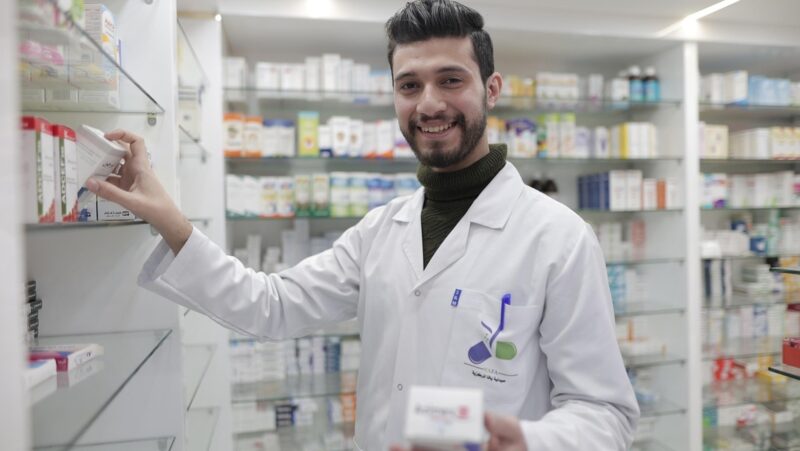
Drug and alcohol addictions hurt many people worldwide. These problems affect not just individuals but whole communities. The World Health Organization says about 31 million people have drug use disorders globally. In the U.S., nearly 20 million adults struggled with substance use in 2017. These big numbers show we need to tackle addiction as a public health issue.
DUI Statistics: A Case Study from Florida
Alcohol addiction’s impact on public health shows up clearly in DUI stats. Florida offers a stark example of this widespread issue. According to Olympic Behavioral Health statistics, in 2019, drunk driving caused 814 deaths in Florida, making up 26.7% of all traffic deaths. In 2018, there were 5,106 alcohol-related crashes, killing 352 people. Police made 32,177 DUI arrests that year, including 69 teens. Hillsborough County topped the state with 3,256 DUI convictions in 2011. These numbers show the deadly results of alcohol abuse on roads and highlight the urgent need for better ways to stop drunk driving.
How Does Substance Abuse Strain Healthcare Systems?
Substance abuse strains healthcare resources. Addicts often need frequent medical care due to overdoses, accidents, and health issues. Emergency rooms have many patients with drug problems. This high demand can lead to crowded hospitals and longer waits for all patients.
Common Health Problems Associated with Addiction
Addiction can cause many health issues. Some of these are:
- Liver disease: Cirrhosis and liver failure, especially from alcohol abuse
- Heart problems: Increased risk of heart attacks and cardiovascular diseases
- Breathing issues: Lung damage from smoking or inhaling drugs
- Mental health disorders: Depression, anxiety, and other psychiatric conditions
- Infectious diseases: Higher risk of HIV, hepatitis, and other bloodborne illnesses
These health problems often need ongoing care, which puts more stress on healthcare. Substance abuse also makes it harder to treat other health conditions.
Mental Health and Addiction
Mental health and addiction often go hand in hand. Many people with substance use disorders also have mental health problems. We call this dual diagnosis. Mental health issues often seen with addiction include:
- Depression: Persistent feelings of sadness, hopelessness, and loss of interest
- Anxiety: Excessive worry, fear, and difficulty managing daily life
- Bipolar disorder: Extreme mood swings between manic and depressive episodes
- Post-traumatic stress disorder (PTSD): Lingering trauma from past experiences
- Schizophrenia: Distorted perceptions of reality and disordered thinking
Treating both addiction and mental health is tough for healthcare systems. We need treatment that addresses both issues at once.
What Is the Economic Impact of Addiction?
Addiction costs society a lot of money. Direct costs include medical care, rehab programs, and law enforcement. Indirect costs come from lost work, accidents, and lower economic output. Studies show the huge financial impact of addiction:
- Substance misuse in the U.S. costs over $600 billion yearly.
- Healthcare costs for addiction reach about $35 billion a year.
- Lost workplace productivity costs nearly $25 billion annually.
These numbers show how much addiction costs society. The National Institute on Drug Abuse reports that every dollar invested in addiction treatment yields a return of $4 to $7 in reduced drug-related crime and criminal justice costs. This return on investment can be even higher when healthcare savings are included. Public health plans must consider these costs when making prevention and treatment strategies.
How Does Addiction Affect Vulnerable Populations?
Some groups suffer more from addiction’s effects on public health. These vulnerable populations often face barriers to getting help.
At-Risk Groups
Groups hit hard by addiction include:
- Homeless people
- Pregnant women
- Teens and young adults
- Veterans
- People in the justice system
Public health plans must meet the unique needs of these groups. For example, the Substance Abuse and Mental Health Services Administration reports that about 70% of homeless adults have a substance use disorder. Veterans also face higher rates of substance abuse, with about 1 in 10 veterans diagnosed with a substance use disorder. Targeted help can reduce health gaps and improve outcomes for vulnerable populations. This might include specialized treatment programs, housing assistance, or job training to address the complex needs of these at-risk groups.
Social Consequences
Addiction affects more than just health. It hurts families and communities, too. Substance abuse often leads to broken homes, child neglect, and violence. These problems can harm multiple generations. The National Survey on Drug Use and Health found that about 8.7 million children lived with at least one parent who had a substance use disorder in the past year. This exposure can increase a child’s risk of developing substance use problems later in life.
Areas with high addiction rates may see:
- Increased crime
- Higher unemployment
- Lower property values
- Overworked social services
Public health efforts must address these social issues to fight addiction’s widespread effects. Community-based programs that offer support to families affected by addiction can help break the cycle of substance abuse across generations.
What Are Effective Public Health Strategies for Addiction?
Tackling addiction’s impact on public health needs a multi-pronged approach. Good strategies combine prevention, treatment, and harm reduction.
Prevention Initiatives
Prevention programs try to stop substance abuse before it starts. These efforts focus on education and awareness, early help in schools, community programs, and rules limiting access to addictive substances. Investing in prevention can reduce addiction’s long-term burden on society.
Treatment Approaches
Good treatment is key for people struggling with addiction. Public health systems must offer various proven treatments.

These include medication-assisted treatment, behavioral therapies, inpatient and outpatient rehab, support groups, and peer recovery. Expanding access to these treatments can help more people recover and reduce addiction’s overall impact.
Harm Reduction Strategies
Harm reduction aims to lessen the negative effects of drug use without requiring people to quit. These strategies include needle exchange programs, safe injection sites, naloxone for opioid overdose prevention, and drug testing services. While some debate these programs, they can protect public health by reducing disease spread and preventing fatal overdoses.
How Can Policy Address Addiction?
Public health policies play a big role in fighting addiction. Good policies can help prevent substance abuse, improve access to treatment, and reduce stigma. Important policy efforts include:
- Funding for addiction research and treatment
- Regulating prescription opioids and other addictive drugs
- Criminal justice reform to prioritize treatment over jail
- Insurance coverage for addiction treatment
Policymakers must work with public health experts to create and use evidence-based strategies for addressing addiction.
Conclusion
Drug and alcohol addictions greatly impact public health, hurting individuals, families, and communities. The strain on healthcare, economic costs, and social problems show we need comprehensive strategies to address this issue. By focusing on prevention, treatment, and harm reduction, along with supportive policies, public health systems can work to lessen addiction’s devastating effects on society.
Treating addiction as a public health concern rather than a moral or criminal issue is crucial for progress. With ongoing research, new approaches, and a commitment to proven practices, we can hope to reduce addiction’s impact on public health and improve outcomes for those affected by substance use disorders.













